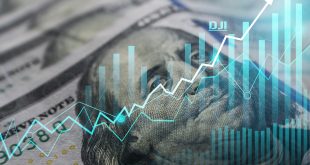
CPI
Inflation Ticks Up as Tariffs Push Prices Higher and Shutdown Clouds Economic Outlook
U.S. inflation crept slightly higher in September, signaling renewed price pressures across key sectors even as the economy grapples with the prolonged government shutdown. The Consumer Price Index (CPI) rose 3 percent from a year earlier, marking a modest acceleration from August’s 2.9 percent gain. The report, delayed by ten days due to the funding impasse in Washington, offers the last official snapshot of inflation before the Federal Reserve’s next policy meeting.
“Core” inflation, which excludes food and energy, eased marginally to 3 percent, underscoring that underlying price trends remain stubbornly above the Fed’s 2 percent target. On a monthly basis, overall prices increased by 0.3 percent, while core prices climbed 0.2 percent. Analysts had expected stronger price momentum, suggesting that consumer demand remains tepid.
The data release was made possible only because of a statutory deadline requiring updated cost-of-living figures for Social Security adjustments. Otherwise, the Bureau of Labor Statistics would have remained offline as the shutdown—now in its fourth week—continues to halt most government data collection. The White House has warned that next month’s inflation report will likely not be released, leaving the Federal Reserve, businesses, and investors with limited guidance on economic trends.
Fed Faces Policy Dilemma Amid Missing Data
The Federal Reserve meets on October 28 and is widely expected to cut interest rates by another quarter point, lowering borrowing costs to between 3.75 and 4 percent. The move would mark the second consecutive rate cut as the central bank shifts its focus from taming inflation to stabilizing a cooling labor market.
Fed officials face a challenging balancing act: easing policy to support hiring while ensuring inflation doesn’t get stuck above target. The loss of key data due to the shutdown complicates that task, making it harder for policymakers to assess whether inflationary pressures are fading or re-emerging.
Fed Chair Jerome Powell has recently acknowledged that the labor market is no longer “very solid.” Job growth has slowed notably in recent months as companies scale back hiring amid uncertainty over tariffs, supply chains, and weaker consumer demand. Immigration restrictions have also tightened the pool of available workers, putting further strain on the economy.
Tariffs and Price Pressures
Inflation’s persistence has been amplified by tariffs on imported goods, which have raised costs on everything from automobiles to lumber. The effective U.S. tariff rate now hovers near 18 percent — the highest level since the 1930s — and has begun to filter through consumer prices more visibly.
Gasoline prices jumped 4.1 percent in September, becoming the largest contributor to monthly inflation. Meanwhile, prices for furniture and apparel rose by 0.4 percent and 0.7 percent, respectively. Food inflation moderated, rising only 0.2 percent after a sharp August increase, though coffee and beef remain significantly more expensive than a year ago.
Not all categories moved higher. Used car prices fell 0.4 percent, and electricity and natural gas costs declined from August levels, offering slight relief to consumers. However, the broader trend still points to elevated price pressures across essential goods and services.
Social Security and the Cost of Living
The inflation uptick triggered a 2.8 percent cost-of-living adjustment (COLA) for Social Security beneficiaries, benefiting roughly 75 million Americans starting January. The average monthly benefit will increase by about $56, though much of that gain could be offset by higher Medicare premiums expected next year.
The adjustment underscores the uneven financial reality facing retirees. Studies show that nearly 80 percent of Americans over 60 lack sufficient savings to weather financial shocks such as health emergencies or long-term care costs. The rise in living expenses, especially health care and housing, continues to erode the limited gains provided by Social Security increases.
Looking Ahead
The inflation picture remains mixed. While tariffs and energy costs continue to fuel price gains, slowing consumer demand and weaker wage growth are keeping broader inflation from accelerating sharply. Still, with the shutdown choking off vital data flows, the Federal Reserve’s ability to steer the economy is being tested like never before.
If the shutdown persists into November, officials may be forced to make policy decisions with incomplete information — a risky move at a time when inflation, employment, and confidence are all flashing conflicting signals. For now, September’s report leaves policymakers and households alike confronting the same uneasy truth: the cost of living remains stubbornly high, and the path to stability is increasingly uncertain.
 Noor Trends News, Technical Analysis, Educational Tools and Recommendations
Noor Trends News, Technical Analysis, Educational Tools and Recommendations




